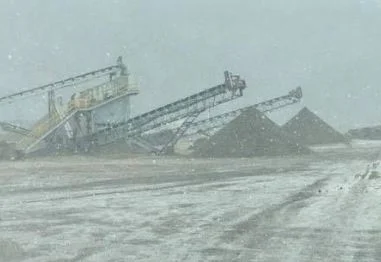The Riders Disposal Area is a hazardous waste cleanup site…
The federal Resource Conservation and Recovery Act - commonly referred to as RCRA - is our nation’s primary federal law governing the disposal of solid and hazardous wastes. The United States Congress passed RCRA on October 21, 1976 to address increasing problems the nation was facing from the growing volume of municipal and industrial wastes. The RCRA, which amended the Solid Waste Disposal Act of 1965, set national goals for:
Protecting human health and the environment from the potential hazards of waste disposal;
Conserving energy and natural resources;
Reducing the amount of wastes generated; and
Ensuring wastes are managed in an environmentally-sound manner.
To achieve these goals, RCRA established three distinct yet inter-related programs: the solid waste program under RCRA Subtitle D (nonhazardous industrial solid waste and municipal solid waste); the underground storage tank (UST) program under RCRA Subtitle I; and the hazardous waste program under RCRA Subtitle C.
Under the hazardous waste portion of the program, it is estimated that up to 6,000 facilities need to be cleaned up under RCRA Corrective Action. It is indicated in general program literature that the United States Environmental Protection Agency (US EPA) and states are focusing their Corrective Action resources on 3,779 priority hazardous waste facilities. These facilities, some of which are large and complex, include some of the most highly contaminated and technological challenging sites the US EPA and states confront in any of their cleanup programs. Preventing exposures (e.g., ensuring that people are not exposed to unacceptable levels of contaminants in soils or contaminated groundwater) is indicated as a top priority. To date, the program has controlled human exposures at 85 percent of RCRA Corrective Action priority sites, which is about 3,200 of them, and protected American citizens from potential groundwater exposures at 76 percent of RCRA Corrective Action priority sites, which is about 2,900 of them. However, it is stated that permanent solutions to achieve groundwater cleanup standards may still be required.
The Riders Dump (Rosedale) Disposal Area is one of these. The Riders Disposal Area is listed by the US EPA as a hazardous waste cleanup site. It is listed as formally by name as follows:
EPA ID: PAD004344222, Hazardous Waste Cleanup, Cleanup Location at 150 Honan Road, Johnstown PA 15906 (Riders Disposal Area).
A link to a fact sheet about this specific site is here:
The US EPA website for this hazardous waste site shows the following information: cleanup status; site description; contaminants at this facility; institutional/engineer controls; land reuse; and site responsibility. The link to the website is provided below.
The US EPA website for the Riders Disposal Area indicates that RCRA Corrective Action activities have been conducted under the direction of US EPA Region 3 with assistance from the Pennsylvania Department of Environmental Protection (PA DEP).
The US EPA website also indicates that the Bethlehem Steel Corporation (BSC) operated hazardous and residual waste disposal facilities on approximately 220 acres of property they owned and which is known as the Riders Disposal Area in East Taylor Township and Johnstown Cambria County Pennsylvania from 1967 to 1996. It also indicates that BSC wastes that were historically managed at the Riders Disposal Area included waste pickle liquor; lime-stabilized waste pickle liquor sludge; ferromanganese sludge and slag; oils & grease; acid rinse water; coal tar sludge; zinc ore leach sludge; electric arc furnace (EAF) and other baghouse dusts; brass foundry waste; and filter cake from a wastewater treatment plant. These wastes were disposed at several areas at the Riders Disposal Area.
What caught my eye immediately during review of information on the US EPA website was the list of and my general lack of knowledge of coke plant processes and wastes that were “managed”. In particular, the statements contained in the website that indicated “In November 2006, the United States Environmental Protection Agency (US EPA) determined that the Human Health Exposures Under Control and Groundwater Migration Environmental Indicators had been met” and the site fact summary which indicated “Human exposures under control - Yes, controlled” and “Groundwater under control - Yes, controlled”.
Not exactly knowing or understanding what these statements meant, and knowing that I must further understand coke plant processes and operations, their potential contaminants, and the effects of such contaminants on human health in order to do so, I dived even more into my research activities. I started with the “Additional Site Information” section of the US EPA Riders Disposal Area website under the “Documents, reports and photographs” menu.
Website Link:
Aerial map showing the general location (yellow dot) of the Riders Disposal Area, EPA ID PAD004344222 as situated along the Hinckston Run stream. Middle Taylor Township is to the left (west). (Source: EPA)
Fairly recent photograph of activities at the current Riders Disposal Area (source and date unknown)
Fairly recent photograph of activities at the current Riders Disposal Area (source and date unknown)


